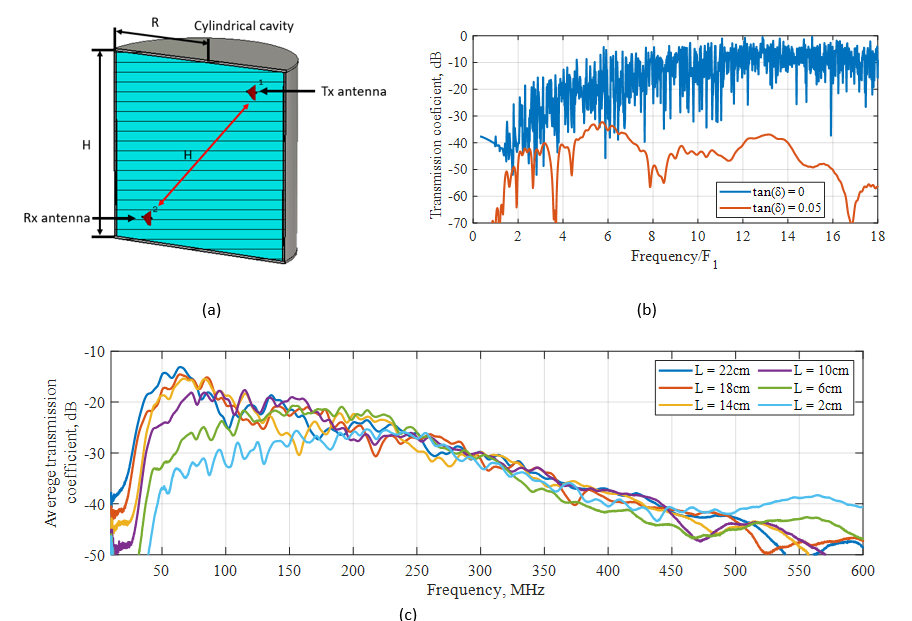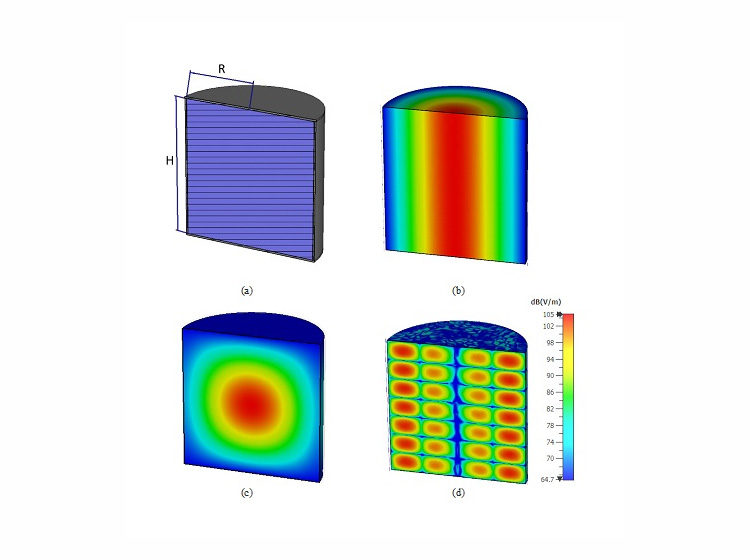This article builds upon our previous conference article on in-vessel communications [1], which examined the feasibility of performing communications inside enclosed volumes at their eigenmode frequencies. Such an approach is of extreme importance, especially for the cases when the enclosed volume contains lossy and high relative dielectric constant media.
In the present article, we quantify the relationship among the dielectric characteristics of the media (relative dielectric constants and their losses) inside the enclosed volume, antenna sizes and their positions and their influence on overall communications losses. For the purpose of the experiment, a cylindrical metal vessel (barrel) with a height of H = 80 cm and radius, R = 30 cm is used, Fig. 1 (a). The resonator formed in this way is excited using monopole antennas/sensors (Tx and Rx antennas), Fig. 1 (a), and the barrel is filled with a high relative dielectric and high loss loss dielectric (tap water).
The main findings of the article are:
- Losses of the medium are detrimental to the overall transmission loss; however, they also result in the reduction of optimal frequency of operation, inferring that smaller probes can be used to excite such a cavity, Fig. 1 (b).
- Overall transmission losses decrease as the size of the excitation antennas are increased, Fig. 1 (c) however, that occurs only up to a certain frequency. Increasing antenna size beyond this frequency is detrimental to communications. For resonant communications, probe size should be kept at a minimum.
- Positions of the transmitting and receiving probes are of utmost importance, since their position may or may not coincide with the location of electric field maxima and, hence, low losses.

Points 1-3 above indicate that in static systems, i.e. systems when the locations of the transmitting and receiving
probes are predefined, it is always possible to find the optimum frequency of operation, considering probe size, media losses and size constraints. However, in dynamic systems, or systems where the transmitting and receiving probes are moving, optimal frequency of operation will be highly dependent on the exact location of the probes. In this case, the frequency of operation should be an adjustable parameter and its exact value can be found by performing a scan in a predefined frequency range, from which the frequency exhibiting lowest losses are selected.
References:
[1] V. Kirillov, D. Kozlov, H. Claussen and S. Bulja, “Performance Estimation of In-Vessel Resonant Communications”, 18th European Conference on Antennas and Propagation, (EuCAP), 2024, United Kingdom.



Leave a Reply